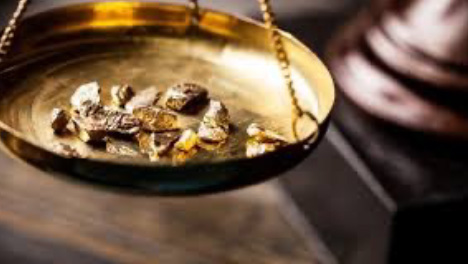Gold can be considered both money and currency, depending on the context in which the term is used.
As money, gold has been used as a store of value, a unit of account, and a medium of exchange for thousands of years. It has been used as money in various civilizations and cultures around the world and has held its value over time. Gold is durable, divisible, and portable, which are key characteristics of money.
As currency, gold can refer to physical gold coins and bars that are used as a medium of exchange. Gold coins were widely used as currency in the past, and many countries issued gold coins as legal tender. Today, gold is not commonly used as currency in everyday transactions, but it can still be used as a means of exchange and a store of value in certain contexts.
In addition to physical gold, there are also various forms of digital or paper gold, such as gold-backed exchange-traded funds (ETFs) and gold certificates. These forms of gold can be traded as a currency, although they are not physical currency like paper bills and coins.
What’s interesting is for thousands of years, gold has been both money and currency at the same time because its own value was guaranteed by its own worth.
There have been many historical gold currencies with gold as the money throughout history, including:
- Byzantine Solidus – a gold coin that was widely used in the Byzantine Empire.
- Persian Daric – a gold coin used in ancient Persia.
- Roman Aureus – a gold coin used in ancient Rome.
- Spanish Doubloon – a gold coin used during the Spanish Empire.
- French Louis d’Or – a gold coin used in France during the reign of King Louis XIII.
- British Sovereign – a gold coin used in Great Britain since the 16th century.
- American Gold Eagle – a modern gold bullion coin produced by the United States Mint.
- South African Krugerrand – a modern gold bullion coin produced by the South African Mint.
- Canadian Maple Leaf – a modern gold bullion coin produced by the Royal Canadian Mint.
- Chinese Panda – a modern gold bullion coin produced by the People’s Bank of China.
- Indian Mohur – a gold coin used in India during the Mughal Empire.
- Dutch Ducat – a gold coin used in the Netherlands in the 16th and 17th centuries.
- Venetian Ducat – a gold coin used in Venice during the Middle Ages and Renaissance.
- Ottoman Sultani – a gold coin used in the Ottoman Empire.
- Swiss Franc – a gold-backed currency used in Switzerland in the 19th and early 20th centuries.
- Australian Gold Nugget – a modern gold bullion coin produced by the Perth Mint in Australia.
- Austrian Philharmonic – a modern gold bullion coin produced by the Austrian Mint.
- Mexican Peso – a gold coin used in Mexico in the 19th and early 20th centuries.
- Russian Chervonets – a gold coin used in Russia during the 19th and early 20th centuries.
- Hungarian Florin – a gold coin used in Hungary in the late 19th and early 20th centuries.
- Portuguese Cruzado – a gold coin used in Portugal from the 17th to the 18th centuries.
- Spanish Doubloon – a gold coin used in Spain and its colonies during the 16th to 19th centuries.
- Dutch Rijksdaalder – a gold coin used in the Netherlands in the 16th and 17th centuries.
- French Louis d’or – a gold coin used in France from the 17th to the 18th centuries.
- Danish Gold Crown – a gold coin used in Denmark from the 17th to the 19th centuries.
- Swedish Gold Daler – a gold coin used in Sweden from the 17th to the 19th centuries.
- Norwegian Gold Speciedaler – a gold coin used in Norway from the 17th to the 19th centuries.
- Prussian Friedrich d’or – a gold coin used in Prussia in the 18th and 19th centuries.
- German Mark – a gold-backed currency used in Germany in the 19th and early 20th centuries.
- Swiss Vreneli – a gold coin used in Switzerland from the late 19th to early 20th centuries.
In summary, gold can be considered both money and currency, depending on the context in which the term is used. As money, gold has been used as a store of value, a unit of account, and a medium of exchange for thousands of years. As currency, gold can refer to physical gold coins and bars, as well as digital or paper gold used as a means of exchange and a store of value. But when it comes down to it, if you possess it, you own it as the value is not a promise its real and in the hands of the possessor.
